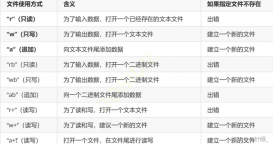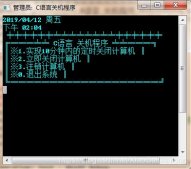函数指针基础:
1. 获取函数的地址
2. 声明一个函数指针
3.使用函数指针来调用函数
获取函数指针:
函数的地址就是函数名,要将函数作为参数进行传递,必须传递函数名。
声明函数指针
声明指针时,必须指定指针指向的数据类型,同样,声明指向函数的指针时,必须指定指针指向的函数类型,这意味着声明应当指定函数的返回类型以及函数的参数列表。
例如:
|
1
2
3
|
double cal(int); // prototypedouble (*pf)(int); // 指针pf指向的函数, 输入参数为int,返回值为double pf = cal; // 指针赋值 |
如果将指针作为函数的参数传递:
|
1
|
void estimate(int lines, double (*pf)(int)); // 函数指针作为参数传递 |
使用指针调用函数
|
1
2
3
|
double y = cal(5); // 通过函数调用double y = (*pf)(5); // 通过指针调用 推荐的写法 double y = pf(5); // 这样也对, 但是不推荐这样写 |
函数指针的使用:
|
1
2
3
4
5
6
7
8
9
10
11
12
13
14
15
16
17
18
19
20
21
22
23
24
25
26
27
28
29
30
31
|
#include <iostream>#include <algorithm>#include <cmath> using namespace std; double cal_m1(int lines){ return 0.05 * lines;} double cal_m2(int lines){ return 0.5 * lines;} void estimate(int line_num, double (*pf)(int lines)){ cout << "The " << line_num << " need time is: " << (*pf)(line_num) << endl; } int main(int argc, char *argv[]){ int line_num = 10; // 函数名就是指针,直接传入函数名 estimate(line_num, cal_m1); estimate(line_num, cal_m2); return 0;} |
函数指针数组:
这部分非常有意思:
|
1
2
3
4
5
6
7
8
9
10
11
12
13
14
15
16
17
18
19
20
21
22
23
24
25
26
27
28
29
30
31
32
33
34
35
36
37
38
39
40
41
42
43
44
45
|
#include <iostream>#include <algorithm>#include <cmath> using namespace std; // prototype 实质上三个函数的参数列表是等价的 const double* f1(const double arr[], int n);const double* f2(const double [], int);const double* f3(const double* , int); int main(int argc, char *argv[]){ double a[3] = {12.1, 3.4, 4.5}; // 声明指针 const double* (*p1)(const double*, int) = f1; cout << "Pointer 1 : " << p1(a, 3) << " : " << *(p1(a, 3)) << endl; cout << "Pointer 1 : " << (*p1)(a, 3) << " : " << *((*p1)(a, 3)) << endl; const double* (*parray[3])(const double *, int) = {f1, f2, f3}; // 声明一个指针数组,存储三个函数的地址 cout << "Pointer array : " << parray[2](a, 3) << " : " << *(parray[2](a, 3)) << endl; cout << "Pointer array : " << parray[2](a, 3) << " : " << *(parray[2](a, 3)) << endl; cout << "Pointer array : " << (*parray[2])(a, 3) << " : " << *((*parray[2])(a, 3)) << endl; return 0;} const double* f1(const double arr[], int n){ return arr; // 首地址 } const double* f2(const double arr[], int n){ return arr+1;} const double* f3(const double* arr, int n){ return arr+2;} |
这里可以只用typedef来减少输入量:
|
1
2
3
4
|
typedef const double* (*pf)(const double [], int); // 将pf定义为一个类型名称;pf p1 = f1;pf p2 = f2;pf p3 = f3; |
到此这篇关于C++函数指针详解的文章就介绍到这了,更多相关C++函数指针内容请搜索服务器之家以前的文章或继续浏览下面的相关文章希望大家以后多多支持服务器之家!
原文链接:https://blog.csdn.net/zj1131190425/article/details/92065897














